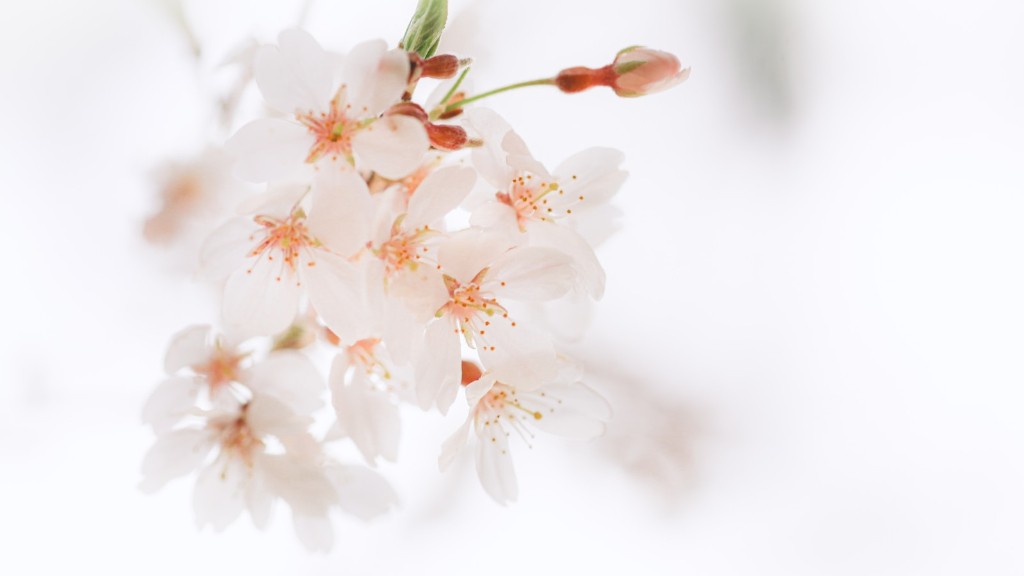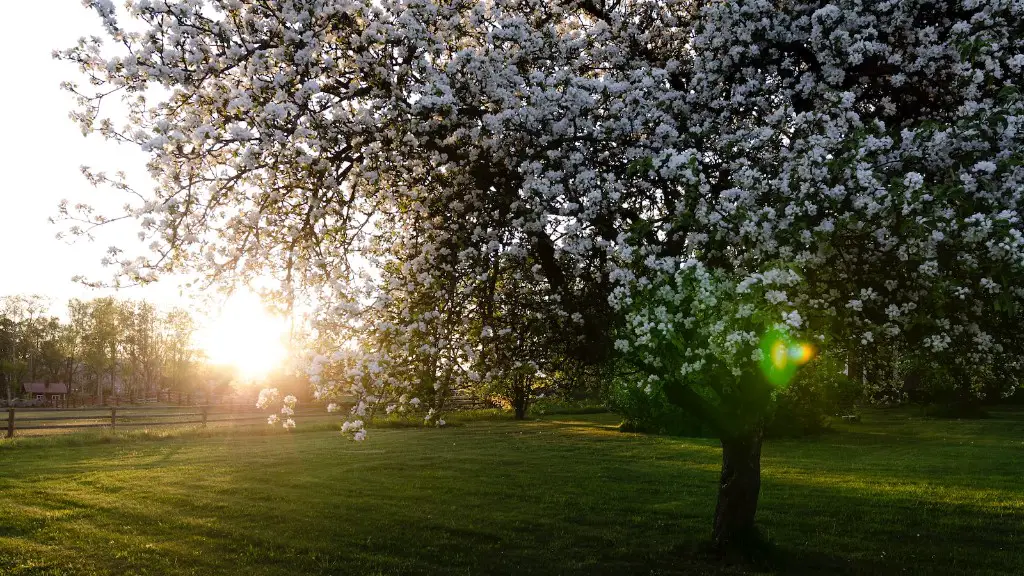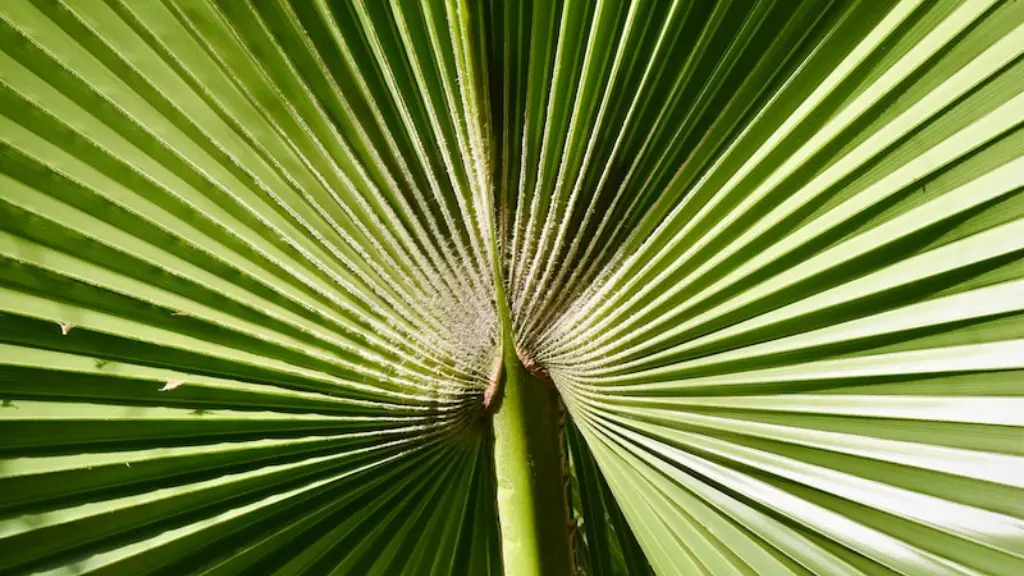Diagnosing The Problem
Is my cherry fruit tree dead? The answer, unfortunately, depends on the severity of the damage. Fading tree leaves and lack of fruiting can indicate the tree may be beyond saving. To begin, the best approach is to start with a visual inspection. Look for any signs of wilting, yellowing, and discoloration in both leaves and bark. Also, note any changes in branch structure, such as cracked or dead branches, that may suggest the tree is in decline.
Next, consider looking for signs of external damage on the tree. Look for any signs of diseases, such as cankers or galls on the branches and trunk. Pests, such as aphids, can weaken a tree and stunt the growth of its fruits. You should also scan the soil around the tree for any signs of infestation or weakness.
It is also important to test the soil pH and nutrient levels. Healthy trees thrive in soil with neutral or slightly acidic pH levels, while unhealthy trees may display signs of excess nitrogen. Make sure to test both the soil around the tree’s roots and the foliage directly.
Reaching Out To An Expert
When it comes to diagnosing the health of a fruit tree, there is no substitute for an experienced professional. Contact your local gardening center to connect with a tree care specialist who can provide a proper evaluation. Also, it can be helpful to get in touch with industry experts, such as an arborist or tree care professional.
In some cases, it may be necessary to have a soil test done. This can provide valuable insight into the tree’s health and offer advice on what type of treatment may be required. Having a soil sample analyzed can also provide insight into the tree’s nutrient requirements and inform you on how to improve soil drainage. Ultimately, a soil sample can provide an accurate diagnosis with which to base an informed decision.
Foliar Analysis
Foliar analysis is a great way to assess a tree’s overall health. To do this, you must collect small samples from the tree’s leaves and branches, then send it to a lab for testing. These results will provide a complete picture of the tree’s nutrition and provide information on what nutrients are lacking or in excess.
The results from a foliar analysis can easily alert you to potential problems, such as nutrient imbalance or disease. If a foliar analysis reveals that the tree is deficient in certain nutrients, you can take action and supplement the soil with necessary additives that can revive the tree’s health.
Tree Pruning & Care
If all of the above steps fail to address the problem of a dead cherry tree, the next step is to look into pruning or maintenance plans. Overgrown trees can stress the branches, leading to looming danger of breakage. If a tree is dead, pruning can often be the best way to prevent further damage to your home and yard.
When it comes to pruning, look for signs of dead, diseased, or hazardous branches first. Cut away any dead or damaged branches before taking a closer look at the structure of the tree. Pruning back overgrown branches can also help to increase fruit yield and help the tree to grow better. Finally, be sure to use the right equipment for the job, and take care to avoid any further damage to the tree.
Cherry Planting & Care
If the original cherry tree can no longer be revived, the best course of action is to look into replacing the tree. When selecting a new cherry tree, begin by determining what kind of tree would thrive in your climate. The best time of year to plant any new tree is in the spring or autumn, when soil temperatures are optimal for root growth.
Once the new tree is planted, take the time to explore the various maintenance and care options available. Trees should always be monitored throughout the year, with weekly inspections to check for signs of disease or weakness. Establish a regular tree-watering schedule, especially during the summer months, to help prevent drought stress. Finally, provide support systems, such as stakes and trellises, to help keep the tree anchored in place and prevent any damage due to strong winds.
Fruit Harvesting Tips
When it comes to harvesting, it is important to note that cherries are quite delicate. Eager cherry-pickers should avoid mishandling or overpicking, as this can lead to a reduced yield in the coming years. Generally, it is best to wait for the cherries to reach a dark, rich color before picking. Picking too early may result in a sour flavor and underdeveloped fruits.
If any birds or wildlife pose a threat to the cherries, consider purchasing bird netting or a protective cover to keep them safe. If the tree has a bounty of fruit, consider harvesting and processing some of the cherries for long-term storage. Cherries can be easily frozen, canned, or even dried for future use.
Disease Prevention & Treatment
The best defense against problems with a cherry tree is prevention. Before any signs of disease manifest, begin by monitoring the tree closely. Make sure to look for any signs of pests or diseases, such as cankers or spots on the bark. If any signs appear, take steps to address the issue immediately.
If an infestation does occur, it is important to treat the tree quickly to prevent further spread of the disease. Begin by pruning away any affected branches and addressing any nutrient deficiencies in the soil. Then, introduce beneficial predators, such as ladybugs, to help naturally reduce the infestation. Additionally, consider regular applications of insecticidal soap or tree-safe sprays to reduce the pest population.
Identifying Nutrient Deficiencies
Testing the soil for nutrient deficiencies is essential for keeping a cherry tree healthy. Low concentrations of essential minerals, such as nitrogen and phosphorus, can lead to poor growth and reduced flowering. Compounding this can be an excess of dissolved salts or harmful toxins in the soil, which can further weaken the tree.
The best approach is to have a soil test done to determine nutrient levels, pH, and salinity. Introducing amendments or fertilizers high in nitrogen and boron can help to boost growth and improve fruiting. This should be repeated throughout the season to ensure optimal growth and flourishing of the tree.
Post-Harvest Care & Storage
After harvesting the cherries, take precautions to ensure the longevity of the fruits. The best approach is to wash and dry the cherries as soon as possible. Cherries should be stored in an airtight container in a cool, dark place to prevent mold or decay.
When it comes to freezing cherries, the process is quite simple. Make sure to remove the stems, wash and dry the cherries, and place them on a baking sheet before freezing. Once frozen, transfer the cherries to an airtight container. When ready to use, simply defrost the cherries and enjoy.
Conclusion
In conclusion, diagnosing the health of a cherry tree can be a complicated process. The above steps can provide insight into the tree’s condition and recommend potential remedies. Ultimately, the best way to revive a dying tree is to reach out to an expert and begin the process of diagnosis and treatment.


